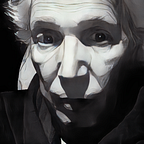Dreaming Freud
The Interpretation of Dreams Resists Interpretation
The logical structure of Freud’s theory of dream interpretation is inextricably bound to the textual structure of The Interpretation of Dreams. Neither the text nor the theory are strictly ‘logical’ in any ordinary or conventional sense of the word. Both simultaneously embrace contrary, even mutually exclusive positions; both do not consistently adhere to the same point of view. Yet, because of their extra-logical nature, the text and the theory are both valuable, in that they provide a viable and dynamic working model of the mind, an entity not noted for logic or consistency, but paradoxically capable of both.
Freud initially advances his theory by asserting that a “dream is a fulfillment of a wish” (154). But before this claim can begin to assume even a modicum of plausibility, he must explain the obvious: a dream with clearly undesirable content. He resolves this problem (at least temporarily) by positing the existence of two species of content: latent and manifest. Given these distinctions, the ‘wish fulfillment’ theory can still be allowed to operate. The manifest content, serving as a kind of allegory to latent content, need not blatantly express the wish.
But this distinction by content also implies a transformational process by which the latent content assumes the form of…
